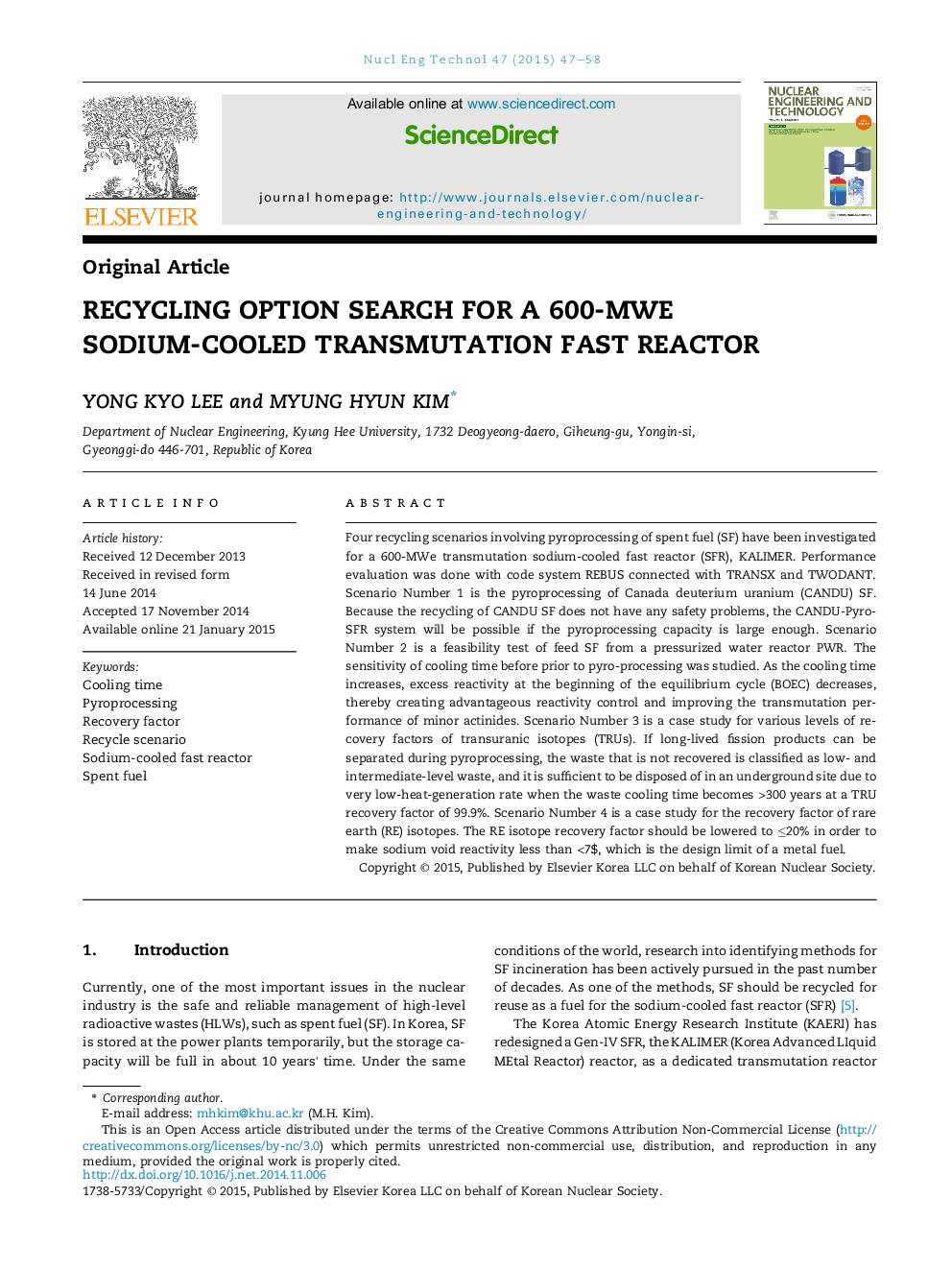| Article ID | Journal | Published Year | Pages | File Type |
|---|---|---|---|---|
| 1740189 | Nuclear Engineering and Technology | 2015 | 12 Pages |
Four recycling scenarios involving pyroprocessing of spent fuel (SF) have been investigated for a 600-MWe transmutation sodium-cooled fast reactor (SFR), KALIMER. Performance evaluation was done with code system REBUS connected with TRANSX and TWODANT. Scenario Number 1 is the pyroprocessing of Canada deuterium uranium (CANDU) SF. Because the recycling of CANDU SF does not have any safety problems, the CANDU-Pyro-SFR system will be possible if the pyroprocessing capacity is large enough. Scenario Number 2 is a feasibility test of feed SF from a pressurized water reactor PWR. The sensitivity of cooling time before prior to pyro-processing was studied. As the cooling time increases, excess reactivity at the beginning of the equilibrium cycle (BOEC) decreases, thereby creating advantageous reactivity control and improving the transmutation performance of minor actinides. Scenario Number 3 is a case study for various levels of recovery factors of transuranic isotopes (TRUs). If long-lived fission products can be separated during pyroprocessing, the waste that is not recovered is classified as low- and intermediate-level waste, and it is sufficient to be disposed of in an underground site due to very low-heat-generation rate when the waste cooling time becomes >300 years at a TRU recovery factor of 99.9%. Scenario Number 4 is a case study for the recovery factor of rare earth (RE) isotopes. The RE isotope recovery factor should be lowered to ≤20% in order to make sodium void reactivity less than <7$, which is the design limit of a metal fuel.
